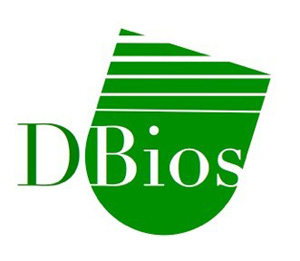
DESCRIPTION OF THE PROJECT
Efficient communication to coordinate the actions of up to a million specialized nestmates is fundamental to the success of social insects, especially ants which represent some of the most sophisticated societies known to biology. Various modalities of signaling have been identified in ants, including the predominant release of chemical substances, visual behavioral displays involving movement or posture, tactile interactions, and the emission of sounds and vibrations whose role has been underestimated for long time.

Figure 1 Scanning Electron Microscopy
picture of the pars stridens of ant.
In the last image the ridges are evident.
Vibratory messages can be generated by wagging the whole body while standing on the substrate, by scraping the substrate with the mandibles or by tapping the nest substrate with both the head and apex of the abdomen. Besides the employment of these unspecialized morphological features a specialized stridulatory organ made of a ‘plectrum’ rasping across a ‘file’ (‘pars stridens’), has evolved in at least five ant subfamilies.
Until now, it was thought that acoustic cues were a very minor part of ant communication, representing simple signal conveying alarm or used as a beacon by other ants for orientation but it has recently become clear that sounds and vibrations are also used to transmit more abstract information, including a species’ identity or an individual’s caste and status. The importance of these signals has become striking after that recent studies have demonstrated the ability of several social parasites to imitate ants’ language to live for long periods, as undetected intruders, in close contact with their host ants.
The project aims at characterizing the acoustic signals and production modalities of various ant species disentangling the factors that shaped the evolution of acoustic communication in ant societies.

Figure 2 A worker of Myrmica scabrinodis
(Photo by Daniel Sánchez-García)
Firstly, we will verify if sounds and vibrations vary at multiple scales, i.e. among colonies within populations, among populations within species, and at higher taxonomic levels (between species, genera and subfamilies). The entity of variation of the first two levels will be evaluated along a latitudinal gradient using Myrmica scabrinodis, a common red ant as a model. Secondly, the acoustic patterns of twenty-five common European ant species will be investigated and compared with signal producing structures.
We will then compare the level of within- and between-populations signal variation of Myrmica scabrinodis with population genetic data, testing the hypothesis that more marked differences of vibroacoustic signals between populations exist due to geographical and genetic distance. In addition, we will test the hypothesis that acoustic patterns have evolved across species, genera and subfamilies following phylogenetic trajectories even though some signal characteristic may be explained by other factors (e.g. nesting and habitat preferences).
Finally, we will study the coevolution of acoustic communication in host-parasite interactions focusing on the slave-making ant Myrmoxenus ravouxi whose workers have to continually raid other ant (Temnothorax spp) nests for worker brood to refresh the labour force of its colonies. The vibroacoustic patterns of the host and the parasite will be compared, and playback experiments will be performed to test whether parasite imitates the host acoustics signals or if the host’s slave workers may “learn” the signals of the parasite during their development as slavers into the parasite colony.
The project aims at demonstrating that the acoustic communication in ants is much more developed and complex than previously supposed. We will seek to demonstrate that the acoustic signals in ants possess an increasing variability at multiple scales, starting from an intra-language variation – dialects – in different populations of the same species, to variability of “language families” unifying different species, until the existence of different “languages” at the genus or subfamily level.
This project, whose Principal Investigator is dr. hab. Luca Pietro Casacci, was carried out under POLONEZ programme which has received funding from the European Union’s Horizon 2020 research and innovation programme under the Marie Skłodowska-Curie grant agreement No. 665778


THE PROJECT RESULTS

Figure 3 The parasitic larva of Maculinea teleius with a
worker and larvae of its host ant species Myrmica scabrinodis.
Many lycaenid butterflies have evolved adaptation to exploit
ant societies. (Photo by Daniel Sánchez-García)
Until now, it was thought that acoustic cues were a very minor part of ant communication, representing simple signal conveying alarm or used as a beacon by other ants for orientation but it has recently become clear that sounds and vibrations could also contain other information. The importance of these signals has become striking after that recent studies have demonstrated the ability of several social parasites to imitate ants’ language to live for long periods, as undetected intruders, in close contact with their host ants.
During the project we characterised the variation in the acoustic signals and production modalities of various ant species disentangling the factors that have shaped the evolution of acoustic communication in ant societies. Ants were recorded by using a device that amplify their sounds and the stridulatory organs were visualised using a Scanning Electron Microscope which allow to obtain pictures of very tiny structures.

Figure 4 Crematogaster auberti, one of the Myrmicinae
species included in the project (Photo by Daniel Sánchez-García)
Firstly, we verified if sounds and vibrations vary at multiple scales, i.e. among colonies within populations, among populations within species, and at higher taxonomic levels (between species, genera). We evaluated the entity of variation at colony and population levels along a latitudinal gradient using Myrmica scabrinodis, a common red ant, as a model. We found that sounds are slightly different between colonies belonging to the same population but mostly differ among ant populations for certain sound characteristics. Secondly, to evaluate the acoustic differences between ant species and genera, we recorded and compared the sounds of 40 common European ant species. We found an enormous variability of sounds that were not explained by the weaker variability in the stridulatory organs, suggesting that the ants can “play” very diverse signals using an “instrument” which is very constant in its structure across species.

Figure 5 A forager of Myrmica scabrinodis
(Photo by Daniel Sánchez-García)
Then, we compared the level of within- and between-populations signal variation of Myrmica scabrinodis with population genetic data, showing that the genetic relationship did not reflect the sound pattern among colonies and populations. Similarly, the ants’ acoustic patterns do not seem to have evolved across species and genera following phylogenetic trajectories. Interestingly, our data suggested that some acoustical signal characteristics could be explained by substrate that ant species use to build their nests (e.g. soil, wood) or temperature and humidity of the environment they colonise.
Finally, we investigated how vibroacoustic signals have evolved in socially parasitic ants using two model systems, the inquiline ant Myrmica karavajevi and its host ant Myrmica scabrinodis and the slave-making Myrmoxenus ravouxi and its host ants belonging to the genus Temnothorax. We discovered that the parasite sound has evolved towards an imitation of the host signals either produced by host queen (in both parasites) or workers (M. ravouxi workers). This imitation strategy, which allow the parasite to integrate into the host colony, was confirmed in playback trials where the host workers reacted in a similar way when we reproduced the sound of the parasite and host queens.

Figure 6 A queen of Myrmoxenus ravouxi interacts
with a slave host worker (Photo by Daniel Sánchez-García)
The results of the project have showed that there is an enormous variability of the signals starting from the individual level, colony, population and species. Having discovered this variability goes beyond the concept that sounds are little used in ants, a wall created in the last 30 years that has slowed down research in this field. Thus, the project “VIBRANT” has brought to light the idea that there are still many aspects to be discovered in this communication channel.
DISSEMINATION AND PUBLICATIONS
During the two years of the project, the preliminary results of the project were presented at 7 international conferences on social insects, bioacoustics and zoology.
- Butterfly Conservation 8th International Symposium, Southampton (UK), 6–8.04.2018. Casacci L.P., et al. 2018. Evolution of acoustic signals in lycaenid-ant interactions (poster presentation).
- XVIIIth Congress of the International Union for the Study of Social Insects, Guarujá (BR), 5–10.08.2018. Casacci L. P., et al. 2018. How to deceive your host: chemical and vibroacoustical strategies of an inquiline ant (oral presentation).
- 2nd International Symposium on Biotremology, Riva del Garda (IT), 4–6.09.2018. Casacci L.P., et al. 2018. Evolution of vibroacoustic signals in Myrmicinae ants (oral presentation).
- 79th Congress of the Italian Zoological Union, Lecce (IT), 25–28.09.2018. Casacci L.P., et al. 2018. Chemical and vibroacoustical strategies of an inquiline ant to integrate into its host colonies (oral presentation).
- Central European Meeting of the IUSSI, Wien (A), 19–22.03.2019. Casacci L.P., et al. 2019 Factors influencing the evolution of vibroacoustic signals in Myrmicinae ants (oral presentation).
- 8th CEWM Central European Workshop of Myrmecology, Regensburg (D), 27-29.09.2019. Casacci L.P., et al. 2019 An inquiline ant uses both chemical and vibro-acoustical mechanisms to integrate into its host colonies (oral presentation).
- 17th Conference of the Italian Association for the Study of Social and Pre-Social Arthropods, Florence (IT), 4–5.07.2019. Casacci L.P. The evolution of vibro-acoustic signals in ant societies (plenary talk).
Publications
Casacci, L. P., Bonelli, S., Balletto, E., & Barbero, F. (2019). Multimodal signaling in myrmecophilous butterflies. Frontiers in Ecology and Evolution, 7, 454. https://www.frontiersin.org/articles/10.3389/fevo.2019.00454/full
CONTACT
Dr.hab. Luca Pietro Casacci
E-mail: Ten adres pocztowy jest chroniony przed spamowaniem. Aby go zobaczyć, konieczne jest włączenie w przeglądarce obsługi JavaScript.

Department of Life Sciences and Systems Biology,
Via Accademia Albertina 13,
10123 Turin,
Italy
Dr. Hab. Magdalena Witek
Email: Ten adres pocztowy jest chroniony przed spamowaniem. Aby go zobaczyć, konieczne jest włączenie w przeglądarce obsługi JavaScript.
Wojciech Czechowski
Email: Ten adres pocztowy jest chroniony przed spamowaniem. Aby go zobaczyć, konieczne jest włączenie w przeglądarce obsługi JavaScript.

Museum and Institute of Zoology, PAS
Wilcza 64, 00-679 Warsaw
Poland





